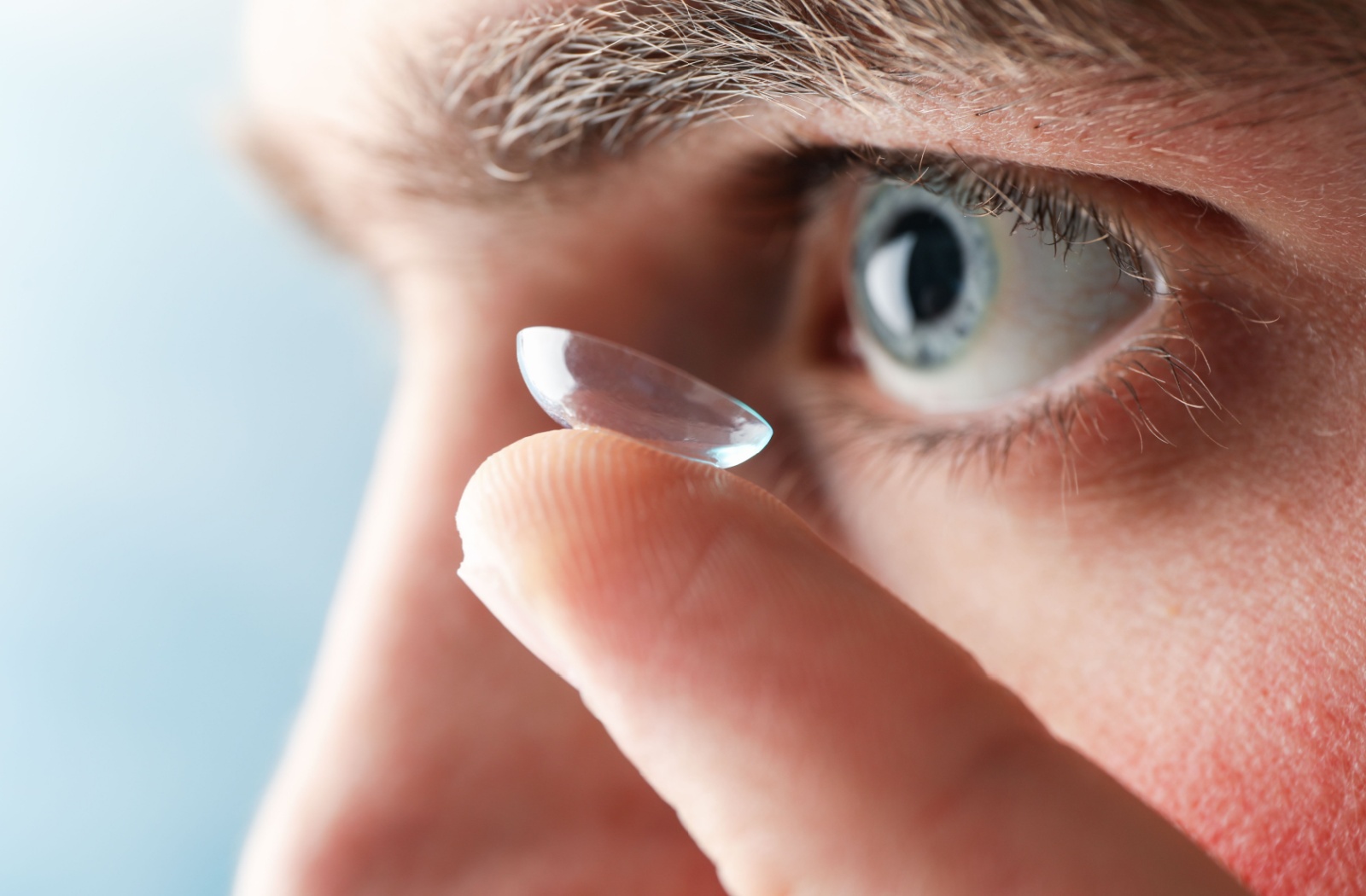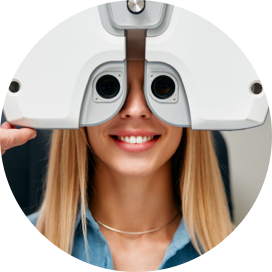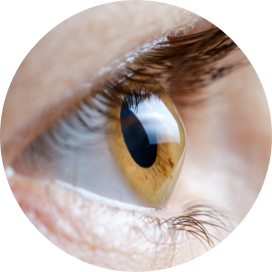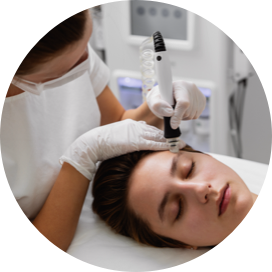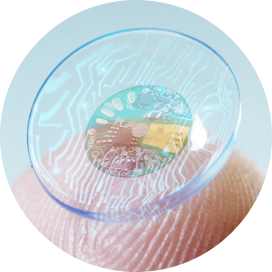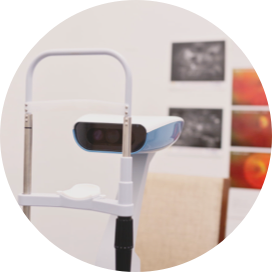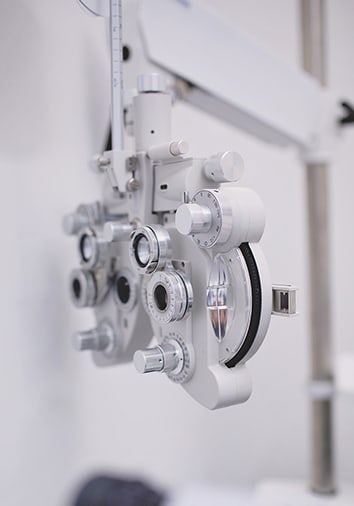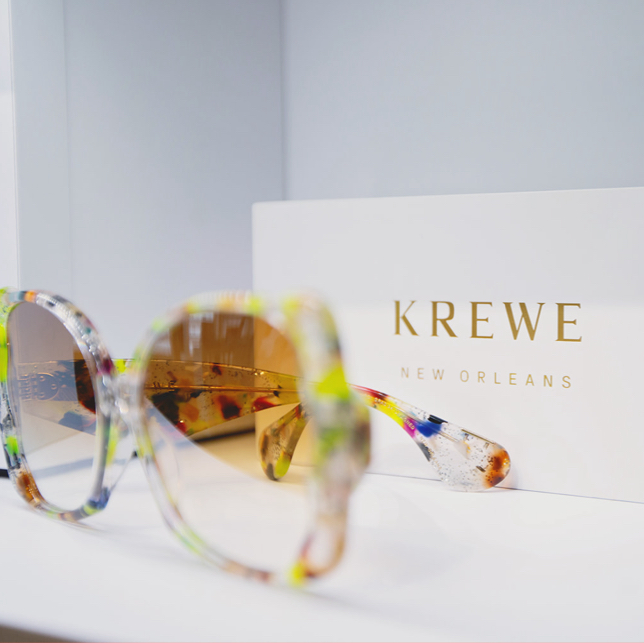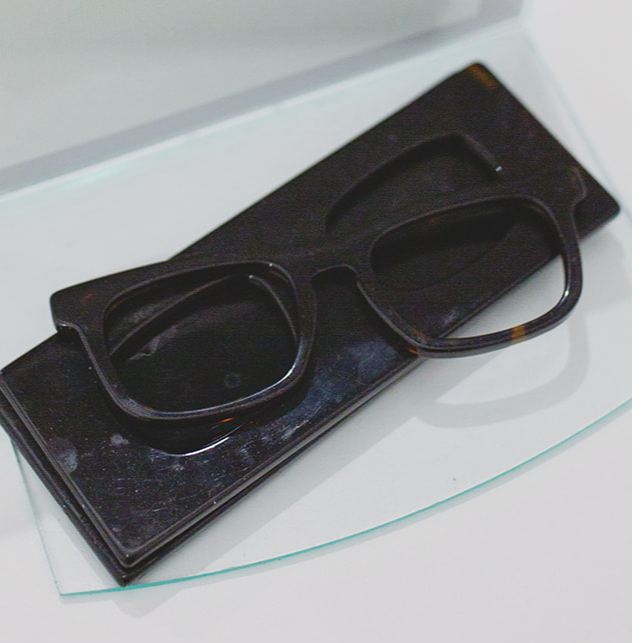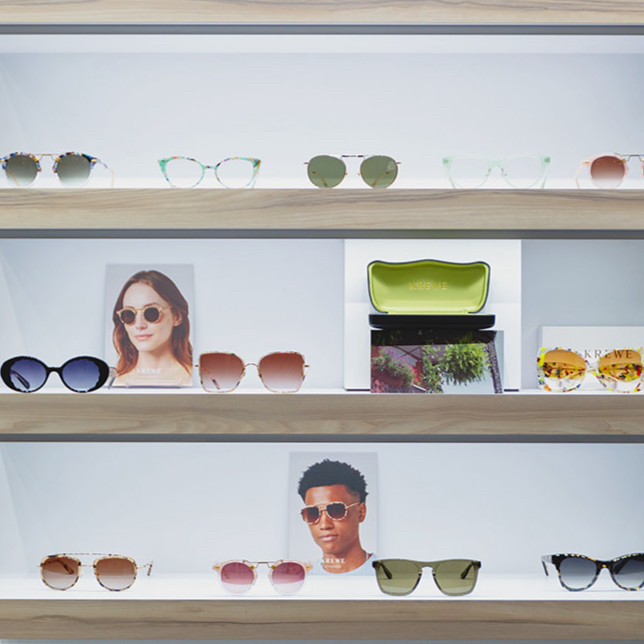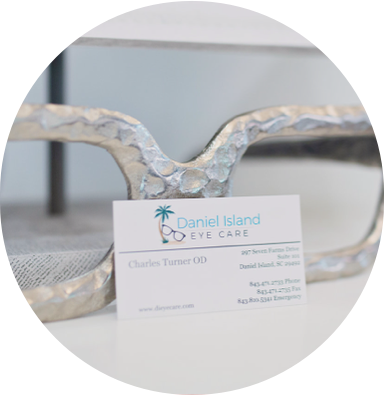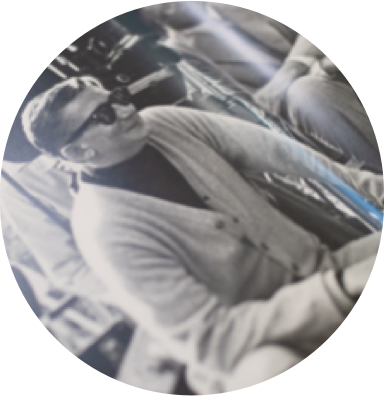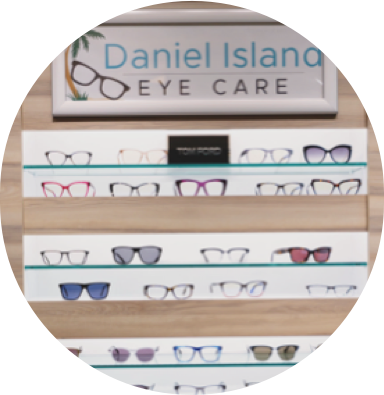Keratoconus contact lenses are unlike standard soft lenses. If you’re wearing them for the first time, it’s normal to have a lot of questions. Because keratoconus contact lenses are different in materials and fit, the first few weeks of wear can take some getting used to.
Knowing what to expect can make a big difference. From lens types and fitting appointments to wear tips and cleaning routines, this guide breaks down what new wearers need to know about adapting to keratoconus contact lenses.
What Is Keratoconus?
Keratoconus is an eye condition where the cornea, the clear front surface of your eye, thins and begins to bulge outward in a cone-like shape. This changes the way light enters the eye and can result in distorted or blurred vision.
How Keratoconus Affects Vision
In early stages, vision may become increasingly blurry or ghosted. As the condition progresses, however, glasses often aren’t enough to provide clear sight. This is where specialty contact lenses come in. These lenses are designed to provide a smooth optical surface over the irregular cornea, helping to sharpen and stabilize vision.
Types of Keratoconus Contact Lenses
There are a few types of contact lenses that work for people with keratoconus. Each type of lens works a little differently.
Common Lens Options
- Rigid Gas Permeable (RGP) lenses sit directly on the cornea and offer especially crisp vision.
- Hybrid lenses combine a rigid center with a soft outer ring for increased comfort.
- Scleral lenses are larger lenses that rest on the white part of the eye (the sclera) and vault completely over the cornea, making them especially effective for more advanced keratoconus.
We’ll help you determine which lens type best suits your eyes and lifestyle. Factors like corneal shape, tear film quality, and sensitivity can all influence this decision.
Getting Used to Keratoconus Lenses
Adapting to keratoconus lenses often takes time. Unlike soft contacts, lenses worn for keratoconus tend to be more rigid and larger in size, which means they might feel more noticeable at first. Don’t worry—your eyes will gradually adapt.
What First-Time Wearers Can Expect
During the initial days or weeks of wear, some discomfort is common. Your eyes may water more than usual, and you might notice a mild foreign body sensation. These symptoms typically decrease with consistent wear.
You can expect to:
- Spend time learning how to insert and remove the lenses correctly
- Build up your wearing time gradually
- Notice a big improvement in your vision once the lenses are in place
- Visit your optometrist for follow-up fittings to refine the comfort and fit
Keep in mind that these lenses are often custom-made. Your optometrist will likely need to make some adjustments based on your feedback during your follow-ups.
The Importance of the Right Fit
Getting the right lens fit is a critical part of your experience. Imaging tools like corneal topography and 3D mapping help guide the fitting process.
What Happens During a Fitting
During you’re fitting, we’ll look at factors like:
- How the lens sits on your eye
- Whether it provides even pressure and proper clearance
- How well your vision is corrected with the current design
- How your eye responds after hours of wear
Because keratoconus is a progressive condition, regular check-ins are essential. Your lens fit may need to be updated if the shape of your cornea changes over time.
Tips to Help You Adjust Comfortably
The learning curve for keratoconus lenses is real, but it’s manageable with the right tools and support. The more consistent you are with your lens care and wear schedule, the faster your eyes will adapt.
Helpful Habits to Build
- Start by wearing the lenses for shorter periods, then slowly increase your wear time
- Use preservative-free artificial tears if your eyes feel dry or tired
- Practice lens insertion and removal techniques until you’re confident
- Avoid sleeping in your lenses unless directed to do so
- Stick to the lens care instructions provided by your optometrist
Patience is key. Give your eyes a chance to get used to the feel of the lenses and the new way your vision is being corrected.
Cleaning & Caring for Your Lenses
Proper lens care is a big part of successful long-term wear. Lenses for keratoconus often require particular cleaning routines and solutions.
Daily Maintenance Routine
Depending on your lens type, you may need:
- A daily cleaner for removing debris and protein
- A disinfecting solution for overnight storage
- Sterile saline to fill your scleral lenses before insertion
- A plunger or suction tool to help with handling
- A clean, dry case that gets replaced regularly
Never substitute cleaning solutions or skip steps in your care routine. Using the wrong product can damage the lens or irritate your eyes.
Long-Term Eye Health & Follow-Up Care
Managing keratoconus is an ongoing process. Contact lenses can improve your vision, but your eye health still needs regular monitoring. It’s important to schedule regular eye exams.
Why Routine Visits Matter
Your optometrist will want to see:
- How your corneas are doing over time
- How your lenses are performing
- Whether your prescription or lens design needs to be adjusted
Even if everything feels fine, don’t skip your routine checkups. These visits help catch early signs of change and protect your vision over the long term.
Personalized Support at Daniel Island Eye Care
Wearing contact lenses for keratoconus isn’t a one-size-fits-all experience. It takes time, precision, and partnership between you and your optometrist. With the right lens type, a solid care routine, and ongoing support, you can enjoy improved clarity and comfort every day.
At Daniel Island Eye Care, our team provides valued diagnostics, custom lens fittings, and hands-on education to help first-time wearers feel confident with their lenses. Whether you’re just getting started or ready for a lens update, book an appointment with us and our friendly, knowledgeable team can help you every step of the way.

